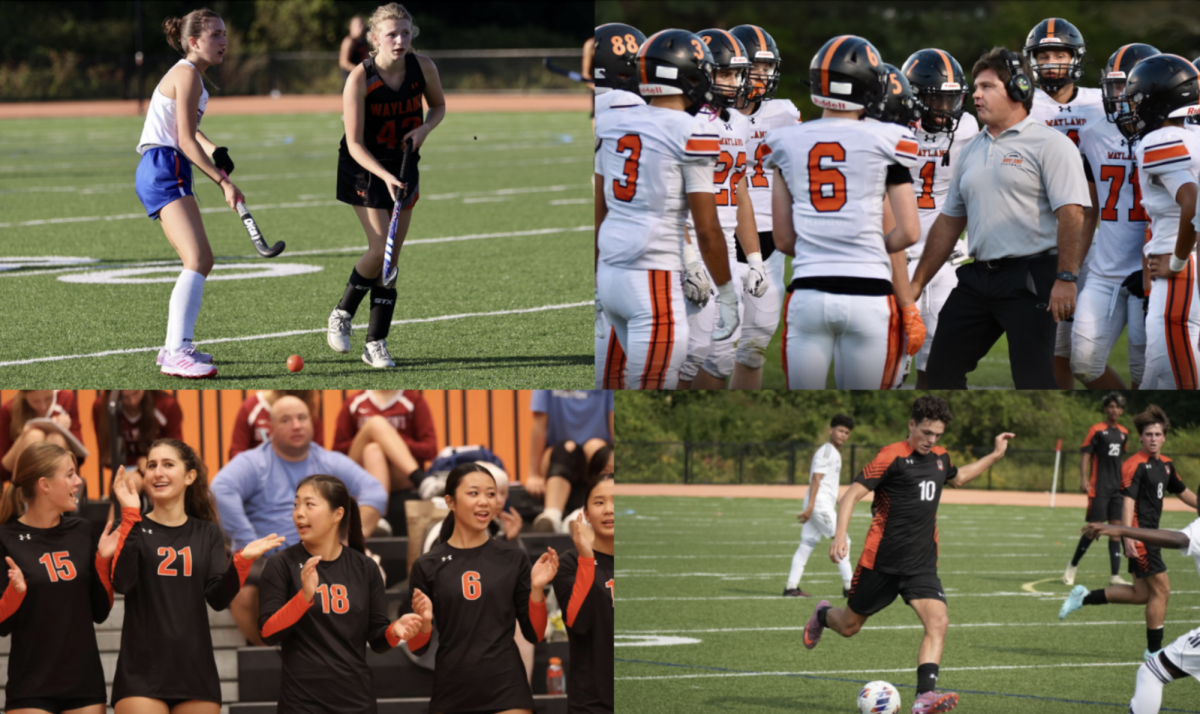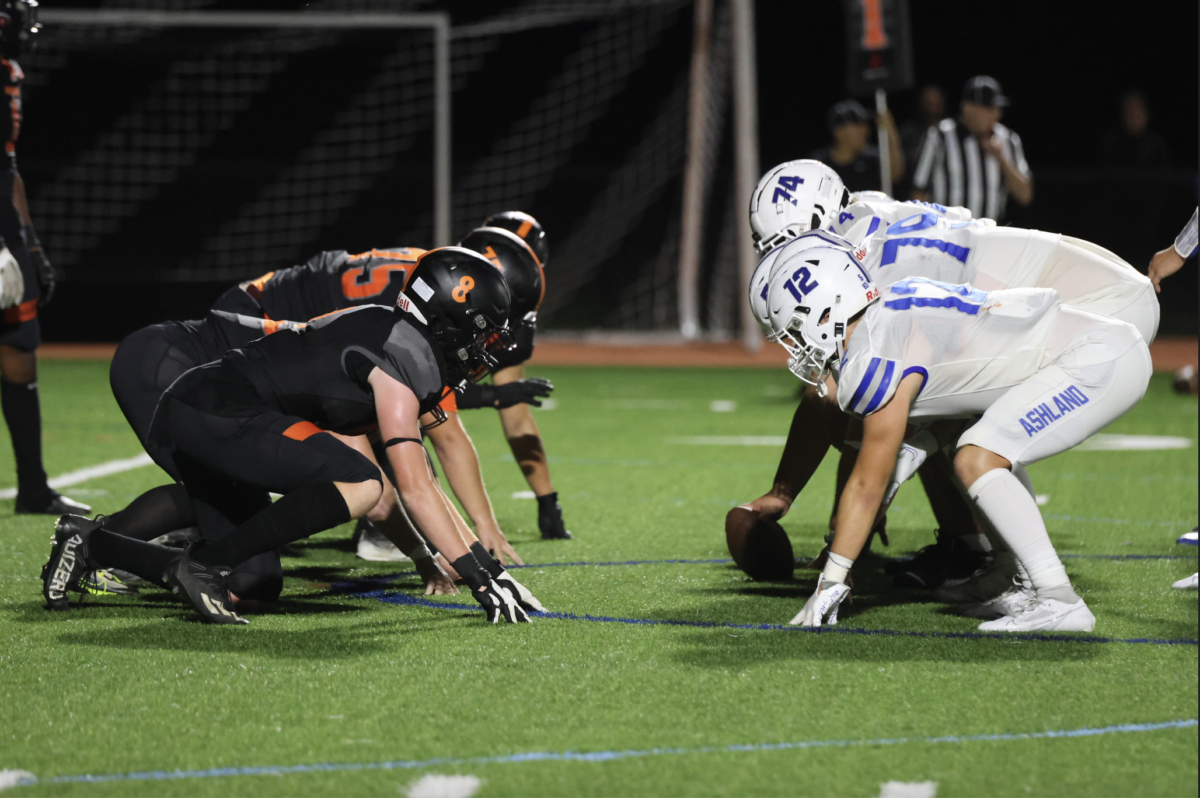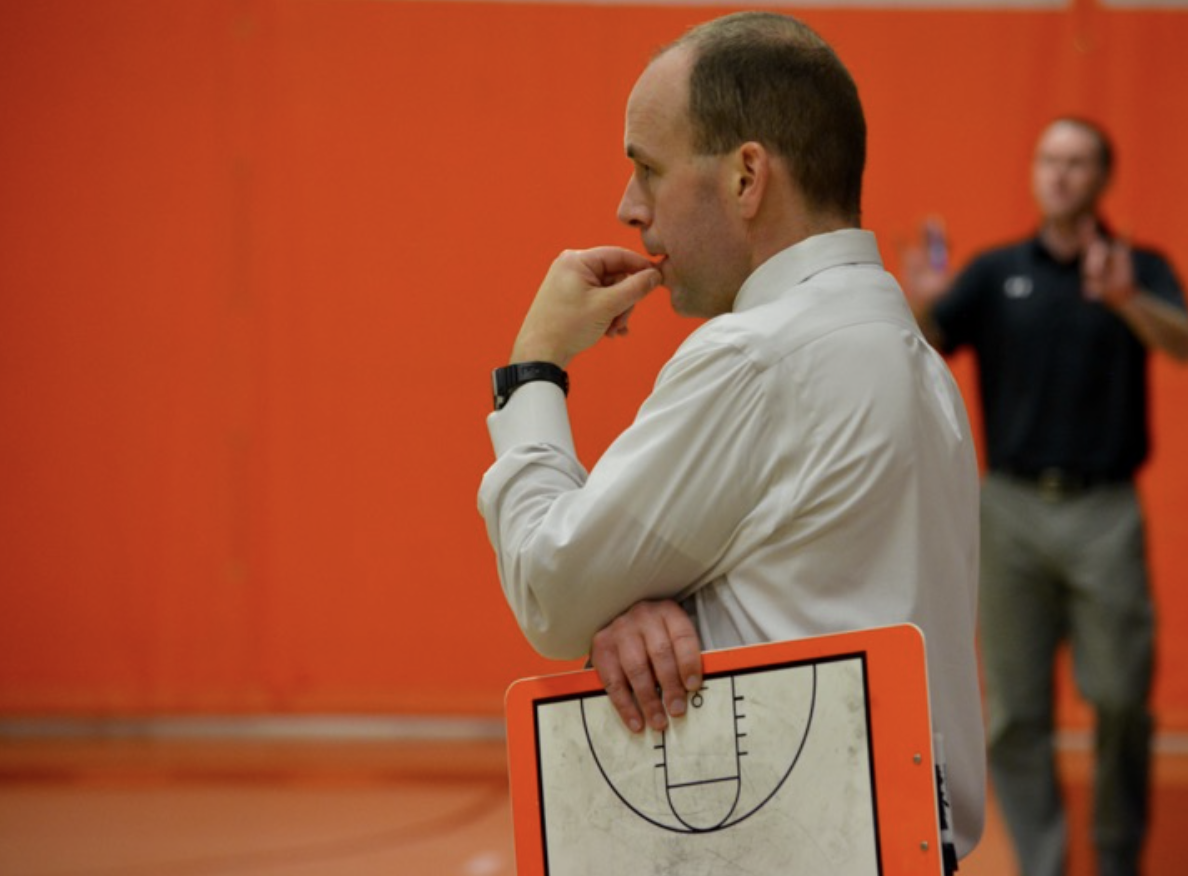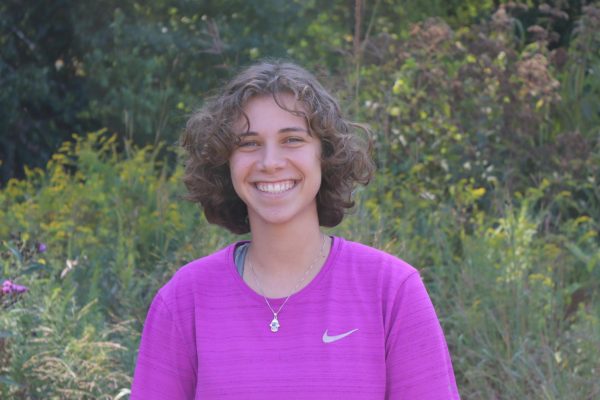Imagine an athlete arriving to school in an outfit every player on the team coordinated, and excitedly waiting all day for the upcoming game. As the day progresses, it’s noticeable that the temperature is far too hot to be outside running around, and it’s not getting any cooler. The hours tick down until a coach sends out an email telling the team that its upcoming game has been delayed, or even worse, postponed.
For many athletes at Wayland High School, this has been the reality of this year’s fall season so far. Between the downpours flooding the fields and the heatwaves bringing 90-degree heat, most teams have had anything but a normal season.
“One day players practiced with no pads or anything on at all,” football coach Scott Parseghian said. “Another day, players just wore helmets and shoulder pads, but didn’t wear any padding underneath. We had to give water breaks every 10 minutes.”
Football is just one of the many sports that has had practices canceled, postponed or moved to an alternate location based on the weather. When it rains, many of the fields flood or become too slippery for players to safely practice on. On the other hand, when a certain temperature is reached on the field, the school is legally required to postpone or cancel practices and games.
“We only have one turf field in this town, and all the games are played on a turf field,” Parseghian said. “This makes it really hard to practice on the grass fields when it’s wet, because then kids are slipping on the mud and it’s hard to get a real gauge of what the team wants to accomplish out there.”
Practice being canceled can be difficult for players who feel like they need to practice each day to keep their skills. Some players, like junior soccer player Maeve Moran, think practices are necessary to build team chemistry. Without practice, performance in games might not improve.
“It’s frustrating when our games or practices are canceled because of the weather, since all we want to do is play our sport,” Moran said. “In order to learn how to work together, we need to have practice, so it can be difficult when the fields are closed or when the weather is too hot. When we can’t practice together, it makes it harder to play in a game.”
In addition to the players’ stress, it can be a financial burden for teams and schools to make last minute decisions about whether a team will have practice or a game due to the weather.
“Since the weather can change, you’re probably more likely to postpone a game if the team is coming from farther away,” athletic director Heath Rollins said. “The bus trips can be $1,000 for a school, so we want to be cognizant of that. We don’t want to play in weather that’s not safe, but if our team is playing a close enough school that can get here efficiently, like a Weston game, we’re more likely to play when [the weather] is a little bit questionable.”
The athletic directors for each school work alongside each other and the school’s respective athletic trainer to ensure that athletes are as safe as possible. For WHS, when the heat is a potential safety concern, Rollins makes a joint decision with athletic trainer Katie Headly about whether a game or practice should be canceled or postponed.
“We’re continuously checking the weather,” Rollins said. “We look at multiple weather apps and lightning trackers, and then make our best guess. I think there’s some apps that show better hour-to-hour rainfall totals and some that show better radar, so we use a variety of different sources.”
It’s important for the athletic directors to be in constant communication, as well as staying on top of the weather at each hour of the day. There are various moving parts to a sports schedule, including when officials are available, when both schools are available, the bussing logistics and more. If there is not an outpour of communication between the competing schools and the athletic directors of each team, teams could show up to different places at the wrong time or when they are not allowed to compete.
“We took advantage of the early release on [Wednesday, Sept. 13] and got on the turf at 2 p.m. to avoid the mud before there was supposed to be a soccer game,” Parseghian said. “You’re battling with all kinds of different things here, everyone is trying to manipulate and move schedules, and trying to accommodate and work together. One day, the football team had to share the turf with the field hockey team. Making arrangements like that so we can all get a chunk of the turf and not be out on the muddy and wet surface helps out a lot.”
While this year’s fall season began differently compared to most previous seasons because of weather circumstances, most players have still been able to play and make it work.
“I’m super excited for the season to pick up and really get going,” Moran said. “I’m hoping for some sunny skies in the future, and that we’ll be able to go out there and play our game.”





























